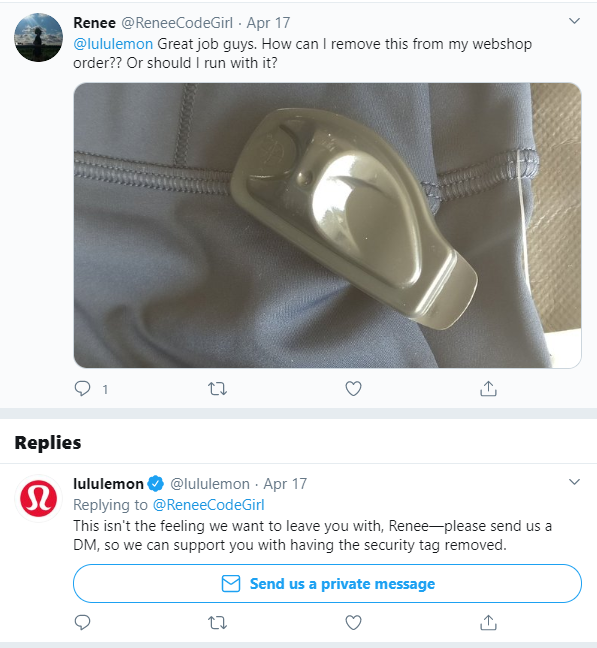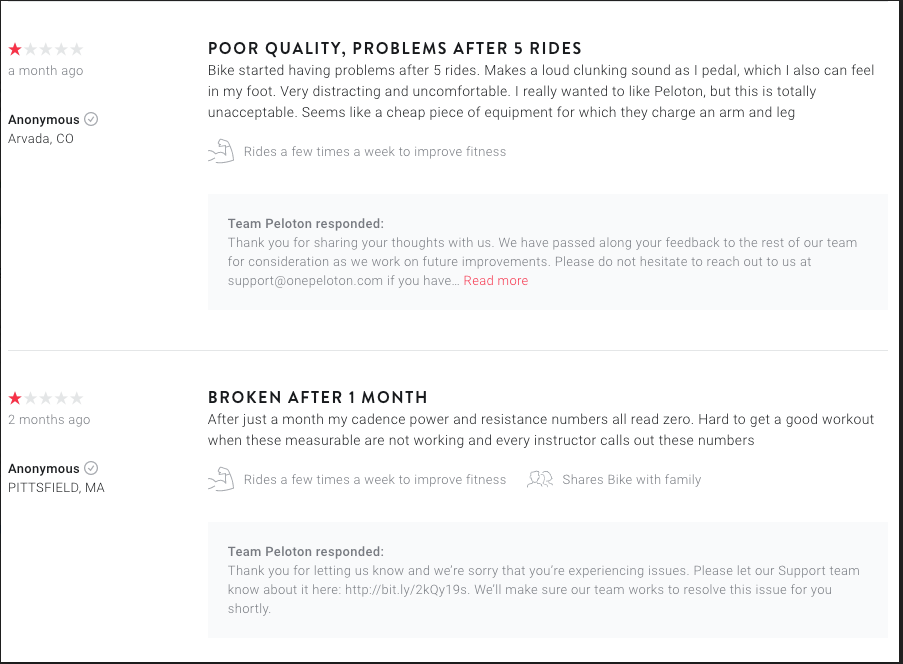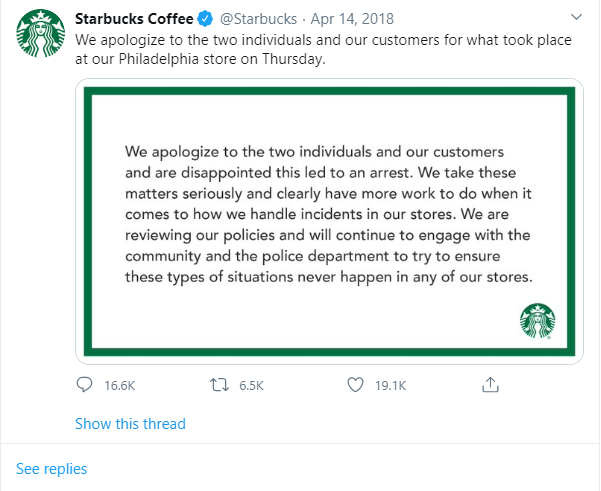Your business works hard to keep your customers happy. You connect with customers one-on-one and tirelessly develop new products and features to meet customers’ needs.
But even with the best customer service, a business is bound to see its reputation take a hit every now and then.
A customer posts an angry review for the whole internet to see. Or a less-than-flattering media story spreads far beyond what you expected.
That’s where online reputation management comes in.
By actively managing your reputation, you can minimize negative customer feedback and keep your online presence as positive as possible.
To help you get started, we’re walking through the what, why, and how of online reputation management—including strategies you can use for your business.
Let’s dive in!
What Is Online Reputation Management?
Online reputation management (ORM) is when, in order to address any negative or false comments, you actively monitor mentions of your brand on websites and social media.
ORM mainly works by responding to negative customer comments online and reacting to stories in the media (both social and traditional) that paint your company in a bad light.
For example, you might release a public statement addressing the content of the story or publish a social media post in response.
How Is Reputation Management Different From PR?
Both public relations (PR) and online reputation management have the same goal: portraying the company in the best possible light. The main difference between the two is how they achieve that goal.
PR firms work externally, such as through advertising and coordinated media promotional efforts. It’s mostly a proactive effort to strengthen brands instead of minimizing attacks on companies (though PR firms do sometimes handle damage control).
Online reputation management, on the other hand, is most often reactive. It involves looking for and responding to potentially damaging content from other people or companies.
Most of the work that goes into ORM is handled internally by brands rather than by an external firm.
Why Do You Need to Manage Your Online Reputation?
The hits a brand takes online can be numerous, but they’re often small attacks—a negative comment here, a low star rating there.
None of these blows is worth a full-scale PR campaign, but they add up quickly.
You need online reputation management to take care of each of these little fires before they amount to serious damage.
ORM is also important for maintaining transparency—a vital ingredient of brand loyalty in 2020.
While there is certainly still a place for orchestrated PR campaigns, consumers today are also looking for organic interactions with companies. They want to hear directly from businesses in personalized conversations, such as a direct message or an Instagram comment.
With online reputation management, your business combats negative claims by addressing them directly and openly.
5 Online Reputation Management Strategies You Can Use
Given the sheer number of social media and other sites where your brand might be mentioned, online reputation management can seem daunting.
But don’t worry—we’re here to help! We’ve put together five sound strategies that will help you get started managing your brand’s online reputation.
1. Answer Promptly and With Empathy.
Sometimes the best ORM happens before a negative comment or review is posted. When customers ask questions, whether by messaging you directly or posting on social media, you should respond right away.
A Clutch survey found that 83% of people expect responses to social media comments in a day or less, so don’t wait too long. Prompt responses prevent frustrated users from posting negative feedback and show the customer you place a high value on helping them.
Equally important is answering with empathy.
Let the customer know you are invested in solving their problem and that, ultimately, you are there to help. Athletic clothing company Lululemon did this when they answered a question on Twitter:

If you don’t respond to customer questions quickly, it can cause a private message to turn into a negative public statement.
That’s what happened to the clothing company American Eagle.

With careful online reputation management, American Eagle could have avoided an unhappy customer—and a very negative piece of public feedback.
Fortunately, it’s easy to prevent this kind of publicity.
Responding quickly and with empathy to questions is a simple way to satisfy customers and build a positive online reputation.
2. Address Negativity Up Front.
It can be tempting to discount negative comments and reviews from customers. After all, why would you want to draw attention to them by responding? But the truth is that you’re doing your company a disservice by ignoring unhappy customers. Of the 82% of consumers who read online reviews, 97% also read the business’s responses. Addressing negative reviews is a way to show customers that even if they have an issue with your company, you will be there to take care of it.
So when customers leave negative comments and reviews, always respond. Address their issue with patience and determination. Peloton, an exercise-equipment company, follows this mind-set by consistently responding to negative reviews posted on their website.

Lack of response on your part can come across as a confirmation of bad press. Everlane, a clothing company, received numerous questions and comments regarding a news story about the unionization of their workers, and the company never responded.

3. Own Up To Your Mistakes.
If your company faces scrutiny for a real or perceived scandal, it always helps to apologize.
Showing remorse diffuses tense customer situations and strengthens relationships with consumers. It also shows shoppers that your company is honest and transparent.
Craft your apology with a genuine intention to own up to and resolve the issue. Directly address the main concerns raised by consumers and the media, and describe what you are going to do to resolve the situation.
Consider the medium for your apology as well. If the bulk of negative feedback is through a social media platform, for example, then that channel would be the appropriate space to post your statement. Coffee giant Starbucks released a public apology on Twitter after two African American men were arrested in a Philadelphia store.

Unlike Starbucks, Pepsi delivered a public apology that only hurt their reputation further. It started when the soft-drink brand received tons of negative feedback about their 2017 ad.
In the ad, Kendall Jenner diffused a standoff between police and protesters by handing the police officers cans of Pepsi. Consumers were outraged by what they felt was a belittling of protesters who had been arrested, particularly since the ad directly evoked an image from a protest against police brutality in Baton Rouge, Louisiana.


Everyone makes mistakes—even companies. Stating what you will do to fix the issue or prevent it from happening again shows consumers you are an honest company that will own up to its mistakes.
4. Stay on Top of Your Search Results.
Most marketers think of SEO as a way to keep their brand visible. But it’s also an essential tool for minimizing visibility of negative press and content associated with your brand.
Ideally, you want your company’s page to show up first when your company’s name is searched. After all, the number one result on SERPs gets more than 31% of all clicks, and customers are 10 times more likely to click on the first search result than on a page 10 spots down.
Use an incognito window to monitor your brand’s search results so you see what customers see. Competitors can bid on your branded keywords to make their information show up first, so you may have to bid on your own keywords to retain the top spot.
For example, when you Google Taskade, the top results are all directly related to the company, including their business page, main page, social media, and positive reviews.


Another way to improve search results is by encouraging happy customers to submit positive feedback on ranking review sites. This improves your average rating, which is what potential customers see before clicking in to look at individual reviews.
5. Automate Online Reputation Management.
Instead of manually combing through websites and social media on your own, save time by using software that automates ORM tasks.
One of the simplest monitoring tools is Google Alerts. Simply enter your brand name in the tool, and receive notifications of media and news stories that talk about your company. That way, you will know right away when your company is being talked about, and you can quickly respond if necessary.
The tool Brand24 goes one step further. Instead of just crawling news stories, it also monitors social media for mentions of your brand. It can even perform a “sentiment analysis,” looking at key emotion words in reviews to let you know how people feel about your brand.
SEMrush helps with search ranking analysis by tracking the SERP positions of your brand and competitors. It goes beyond simply crawling sites and compiling mentions of your brand by performing site audits to show you how to make your company-managed pages rank higher. With these automatic tools, you’ll have more time to do the high-level work of ORM—repairing and strengthening relationships with unhappy customers.Uphold Your Brand’s Image with Online Reputation Management
Shoppers judge your brand by what they hear and see about it on the internet.
Use online reputation management to strengthen the positive image of your brand that you have worked so hard to build. Respond to questions and negative feedback and you’ll show current and potential customers that your company is there to resolve any problems they might have. By implementing ORM strategies, you’ll have more control over how consumers view your company.
Do you engage in online reputation management? Share your tips and results in the comments!



I like to read well-written articles. It looks like you spent a lot of time and effort on your blog. I learned a lot from your article and I have already bookmarked and am waiting to read a new article. keep up the good work!